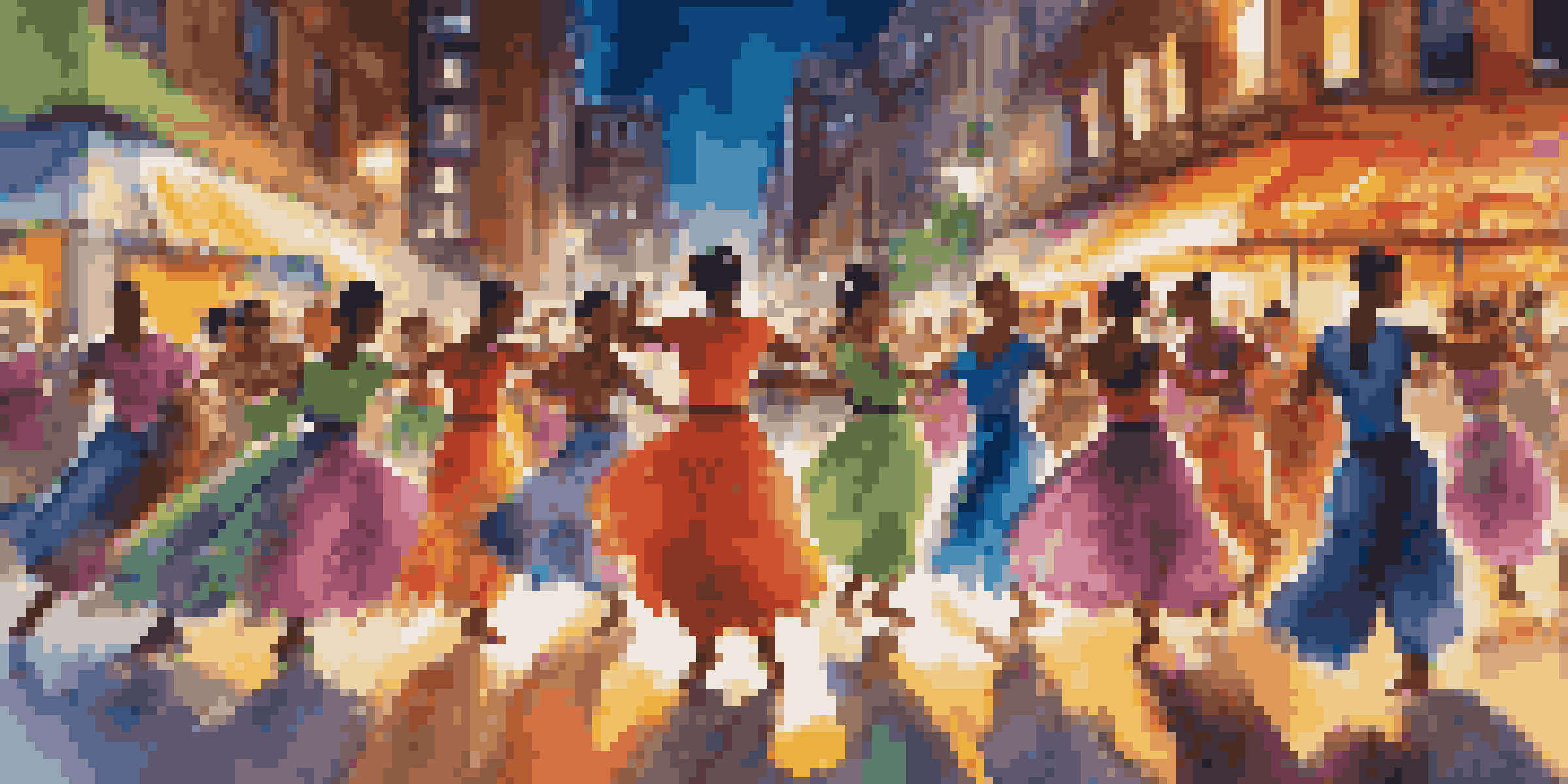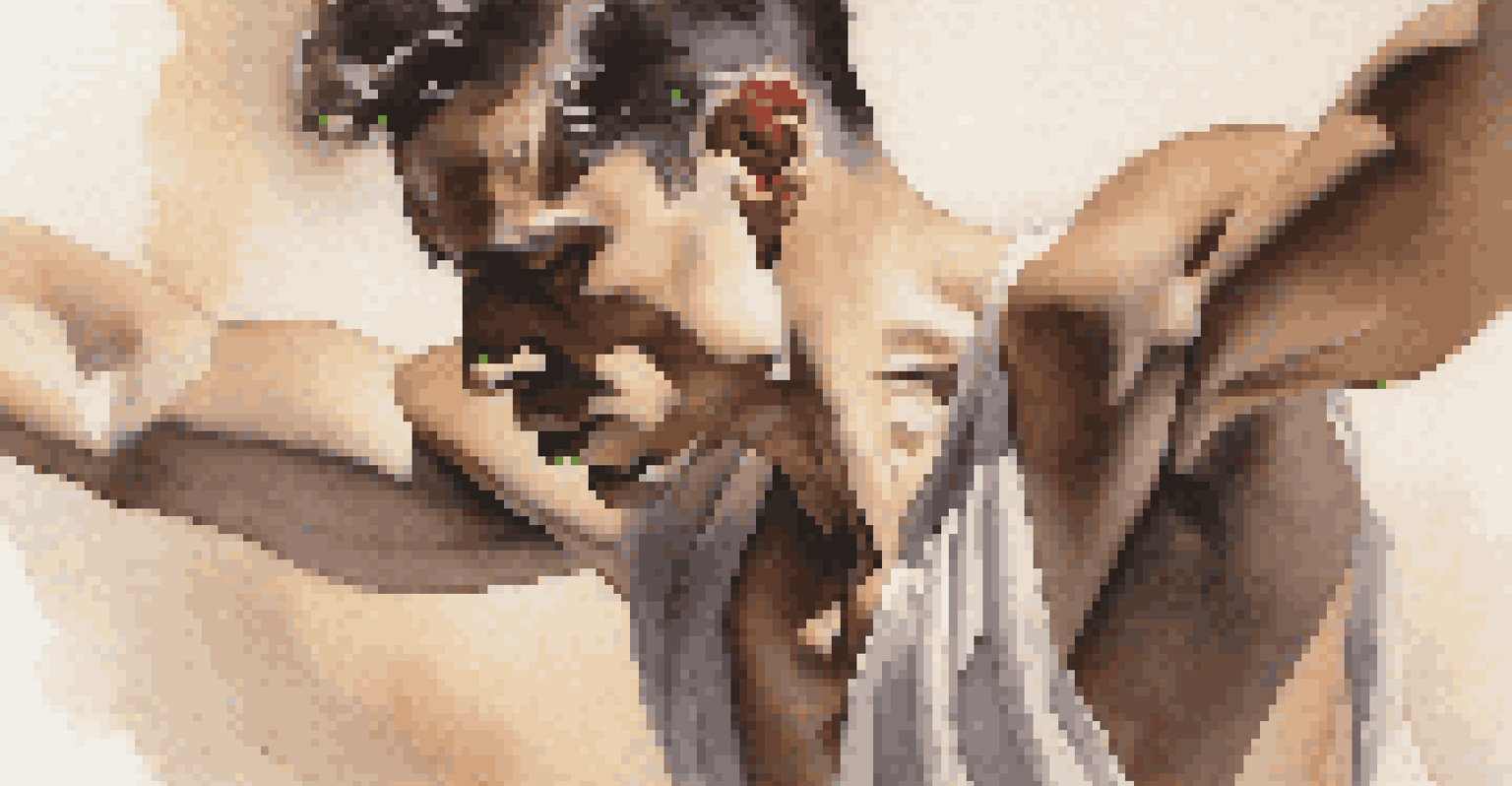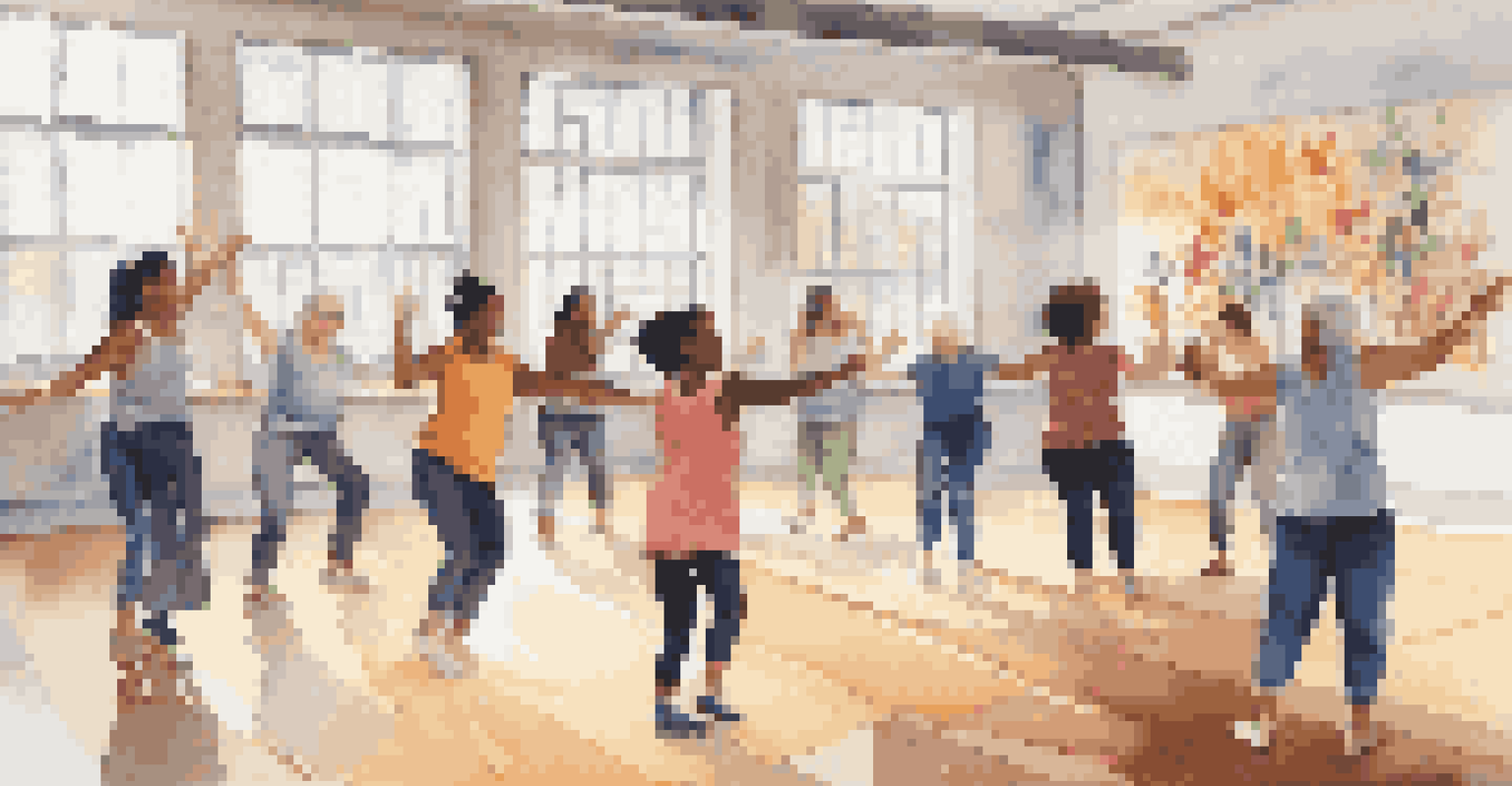Dance as Resistance: Challenging Gender Norms Through Art

Understanding Gender Norms in Dance
Gender norms dictate how individuals are expected to behave based on their sex. In dance, these norms can be particularly pronounced, influencing everything from choreography to audience perceptions. Traditional roles often assign specific movements and styles to males and females, reinforcing stereotypes.
Dance is the hidden language of the soul.
For example, ballet has long been viewed as a feminine pursuit, while hip-hop is often associated with masculinity. Such categorizations limit artistic expression and discourage dancers from exploring their full potential. By examining these norms, we begin to see how they can be challenged through performance.
Ultimately, understanding these norms is crucial for recognizing the power dance holds in subverting them. When dancers choose to defy expectations, they create a space for broader interpretations of gender that resonate with diverse audiences.
The Role of Dance in Social Movements
Throughout history, dance has served as a powerful form of expression in social movements. From the civil rights movement to LGBTQ+ rights, dance has provided a platform for marginalized voices. It captures emotions and messages that resonate deeply with audiences, often transcending language barriers.

For example, the 'Dancing for Change' movement harnesses the energy of dance to advocate for gender equality and LGBTQ+ rights. Performances can transform public spaces into arenas of resistance, challenging societal norms and sparking conversations. This dynamic form of art invites participation, creating a sense of community among activists.
Dance Challenges Gender Norms
Dance acts as a powerful medium to challenge and redefine traditional gender roles through performance and expression.
By leveraging dance as a medium for social change, artists can inspire action and foster understanding about gender issues. Dance becomes not just a performance but a rallying cry for equality and acceptance.
Challenging Stereotypes Through Performance
Performance art offers a unique way to challenge and subvert gender stereotypes. Dancers can embody characters that defy traditional gender roles, pushing the boundaries of what is considered acceptable. This act of defiance showcases the fluidity of gender and encourages audiences to rethink their own perceptions.
The dance is a poem of which each movement is a word.
For instance, a male dancer performing a traditionally feminine dance can provoke discussions about masculinity and vulnerability. These performances can also highlight the absurdity of rigid gender expectations, making audiences question their beliefs. The power of performance lies in its ability to evoke empathy and reflection.
As more artists embrace this challenge, the dance community becomes a catalyst for change. They demonstrate that performance can be a vehicle for exploring and redefining gender identities, fostering a more inclusive environment.
The Intersection of Dance and Identity
Dance is not just a physical expression but also a representation of identity. For many, it serves as a canvas to explore intersectional identities, including race, sexuality, and gender. This exploration can challenge societal norms and create a richer understanding of the human experience.
For instance, queer dance artists often integrate their sexual identities into their work, creating pieces that reflect their experiences. This fusion of dance and identity not only celebrates diversity but also encourages others to embrace their authentic selves. By sharing these stories through movement, artists invite audiences into their world.
Healing Through Movement
Engaging in dance provides individuals, especially survivors of trauma, with a means to reclaim their bodies and empower themselves.
As a result, the intersection of dance and identity fosters an inclusive space for dialogue. It empowers individuals to express themselves freely and challenges the audience to consider perspectives they might not have encountered otherwise.
Dance as a Form of Healing and Empowerment
For many, dance serves as a powerful tool for healing and empowerment, particularly in the context of gender-based violence or oppression. Engaging in dance can help individuals reclaim their bodies and express emotions that may be difficult to articulate. This therapeutic aspect of dance is vital in fostering resilience and self-acceptance.
Programs like 'Dancing Through Trauma' provide safe spaces for survivors to connect and heal through movement. Participants often report feeling empowered as they rediscover their strength and agency. Dance becomes a way to transform pain into artistry, allowing for personal growth and community support.
Through these healing practices, dance not only challenges societal norms but also fosters emotional empowerment. It becomes a reminder that the body is a site of strength and resilience, capable of overcoming adversity.
The Global Impact of Dance in Challenging Gender Norms
Dance transcends cultural boundaries, making it a universal language for challenging gender norms. Around the world, various dance forms celebrate diversity and promote inclusivity, from African dance to traditional folk dances. These cultural expressions often reflect a community's values and can challenge oppressive gender roles.
In regions where gender inequality is prevalent, dance can serve as a form of resistance. Women and marginalized groups use dance to assert their identities and demand recognition. This global phenomenon highlights the power of dance as a unifying force in the fight for gender equality.
Global Impact of Dance
Dance transcends cultural barriers, serving as a universal language for advocating gender equality and inclusivity worldwide.
By embracing diverse dance forms, we can learn from different cultures and their approaches to gender. This exchange not only enriches our understanding but also empowers individuals to stand against traditional norms in their own communities.
The Future of Dance as Resistance
As society continues to evolve, the role of dance in challenging gender norms will likely grow. New generations of artists are emerging with fresh perspectives and innovative approaches to performance. These artists are not afraid to push boundaries, using their art to address pressing social issues.
The rise of digital platforms also provides new opportunities for dancers to share their messages globally. Social media can amplify their voices, allowing for greater reach and impact. This accessibility means that dance can continue to inspire activism and challenge societal norms on a larger scale.

Looking ahead, the future of dance as resistance appears promising. With continued collaboration and creativity, dance will remain a vital tool for advocating change and redefining gender expectations.